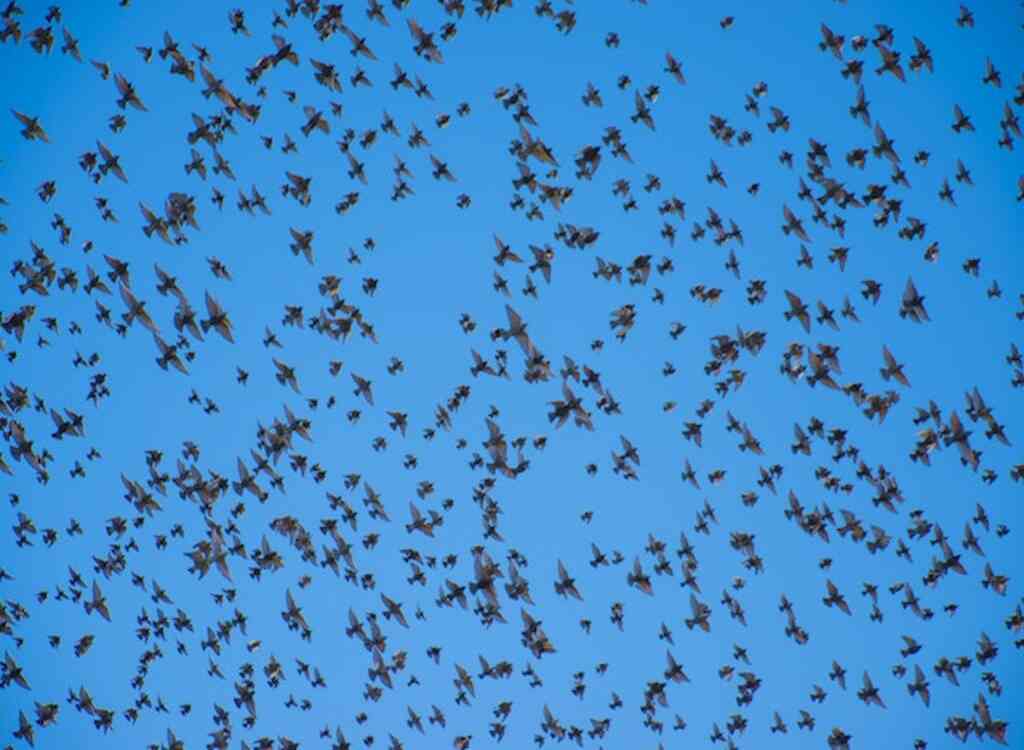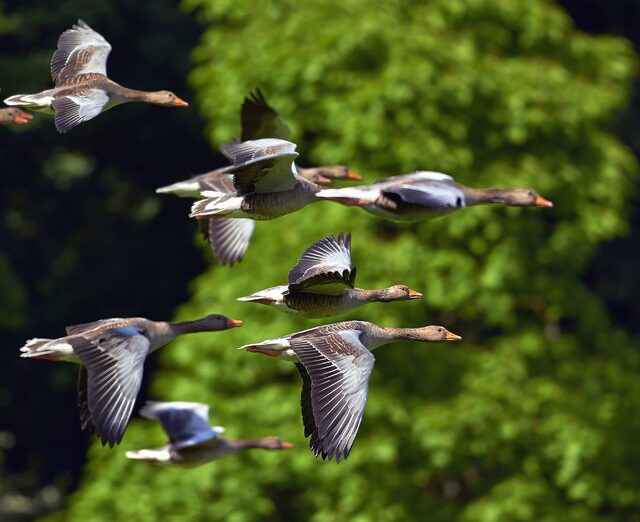Where do birds fly south for the winter? Picture this: a chilly morning, birds packed up with tiny suitcases, passports in wing, and a flock of feathered travelers setting off on an epic vacation.
In this article, we’ll uncover the exotic destinations where birds escape the winter blues, revealing their secret winter hideaways and the fascinating reasons behind their journeys.
So, grab your binoculars and join us on this avian adventure!
Table of Contents
- 1 The Migration of Birds
- 2 The Importance of Understanding Migration
- 3 Overview Of Article Topics
- 4 The Mystery of Bird Migration
- 5 The Basics of Bird Migration
- 6 Where Do Birds Fly South For The Winter?
- 7 The Challenges Birds Face During Migration
- 8 Ways to Support Migrating Birds During Their Journey
- 9 FAQs: Where Do Birds Fly South For The Winter?
- 9.1 Do all birds fly south for the winter?
- 9.2 How do birds know when to migrate?
- 9.3 Why do birds migrate south?
- 9.4 Where do birds fly south to?
- 9.5 How far do birds travel during migration?
- 9.6 Can birds fly across the ocean?
- 9.7 How long does bird migration last?
- 9.8 Do birds return to the same wintering grounds every year?
- 9.9 How do birds find their way back to their breeding grounds?
- 9.10 What happens if birds cannot migrate?
- 10 Author
The Migration of Birds
Bird migration is a fascinating natural phenomenon that has puzzled scientists for centuries.
Each year, millions of birds embark on epic journeys covering thousands of miles across continents and oceans to reach their wintering grounds.
The reasons behind bird migration are complex, but one thing is certain – it’s an incredibly important process in the lives of many bird species.
Bird migration can be defined as seasonal movements of birds from one region to another.
These movements occur in response to environmental conditions such as food availability, breeding opportunities, and weather patterns.
During migration, birds use a variety of cues including magnetic fields, celestial navigation, and landmarks to navigate their way across vast distances.
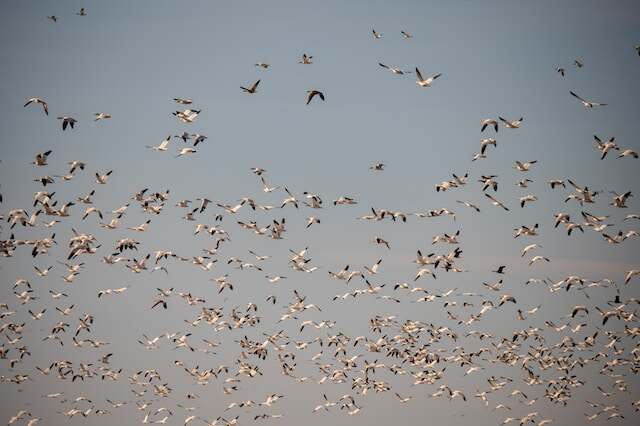
The Importance of Understanding Migration
Understanding where birds fly south for the winter is critical not only for our own awareness but also for the conservation and management of bird populations.
Bird migration plays a key role in ecosystem functioning by helping to disperse seeds, pollinate flowers, control insect populations and provide food sources for predators.
Moreover, migratory species are known indicators of ecological health because they are sensitive to changes in environmental conditions over vast areas.
As such, understanding bird migrations provides us with valuable insights into ecosystem health – how ecosystems function over long periods and how they respond to changes caused by climate change or human activity.
In addition to its ecological importance, bird watching has become an increasingly popular pastime around the world, with millions of enthusiasts travelling far and wide each year specifically for this activity.
Therefore, understanding where different species migrate can help identify prime locations for viewing them during their annual migrations.
Overview Of Article Topics
This article will cover various aspects of bird migration, with emphasis on where different species fly south for the winter.
We will begin by providing an overview of what constitutes bird migration – why it occurs and how it is facilitated.
We will then delve into the specific regions that birds migrate to and explore the routes taken by different species across North America, Europe and Asia.
The article will also detail some of the challenges that migrating birds face during their journeys, including human-induced pressures such as habitat loss, pollution, and climate change.
We will provide tips on how individuals can support migrating birds during their journeys by creating bird-friendly environments locally or through supporting conservation efforts that protect migratory bird habitats.
The Mystery of Bird Migration
Despite many years of research, there remain some unresolved mysteries around bird migration.
For example, scientists still do not fully understand how certain species are able to navigate such vast distances with pinpoint accuracy; a feat which often involves crossing oceans without stopping.
Furthermore, the cues that birds use for navigation during migration are still not fully understood – although it is thought that magnetic fields play an important role in guiding many species towards their wintering grounds.
As such, bird migration continues to elicit much scientific interest and provides an important avenue for future research.
: understanding where birds fly south for the winter is critical for both ecological conservation and our own enjoyment of seeing them in our own backyards each year.
This article explores various aspects of bird migration in detail, providing insights into this incredible natural phenomenon while highlighting its importance for human well-being as well as environmental health.
The Basics of Bird Migration
Definition and Explanation of Bird Migration
Bird migration is the regular seasonal movement of birds from one place to another, often covering long distances. Birds migrate to find more favorable conditions for survival and reproduction.
It is a natural phenomenon that has fascinated humans for centuries, inspiring many works of art and literature.
Migration patterns are generally triggered by changes in environment, such as the availability of food or changes in temperature.
Migration can occur on a daily basis or seasonally. For example, birds may migrate from their breeding grounds to their wintering areas when food becomes scarce during colder months.
Reasons why Birds Migrate
There are several reasons why birds migrate. One key reason is food availability.
As seasons change, different parts of the world experience varying levels of precipitation that can impact vegetation growth and insect populations upon which birds feed.
Another reason for bird migration is breeding.
When spring arrives, many species travel to regions where they will breed and raise offspring, since these areas offer ideal nesting sites with ample resources such as nesting materials and food.
Climate changes also play a significant role in bird migration patterns as well.
As temperatures change, this triggers migrations both northward and southward to more habitable conditions for various bird species.
Food Availability
One major factor driving bird migration is the availability of food sources throughout the year in different regions around the world.
For instance, some species fly southward during autumn when insects become scarce in their breeding areas, while others travel northwards once spring arrives when insect populations surge.
Additionally, some migratory birds rely on nectar-producing plants such as flowers which are only available during certain months each year; hence they must follow these plants when they bloom across various locations in order to survive.
Breeding
Breeding grounds provide essential nutrients and shelter for nesting birds to raise their young.
Many bird species migrate seasonally to breed in areas where they have access to sufficient food, suitable habitats, and protection from predators.
This is particularly true for migratory waterfowl such as ducks and geese who fly northwards during spring when breeding habitats such as lakes, rivers, and wetlands become available.
Birds are highly equipped with navigational tools that allow them to navigate during migration.
Some of these include an innate magnetic sense that helps them detect the earth’s magnetic field, visual cues from the sun and stars during daylight hours or moonlight at night.
Furthermore, some species have a keen ability to detect atmospheric conditions and weather patterns, which contribute significantly towards selecting their flight paths.
Once they have found the correct path, they use landmarks such as rivers or mountain ranges to guide them throughout their journey.
Bird migration is a fascinating natural phenomenon driven by various factors including food availability, breeding grounds, and changing climate conditions.
Birds are equipped with sophisticated navigational tools that enable them to travel long distances every year in search of ideal environments for survival and reproduction.
Understanding bird migration patterns can help us better protect these beautiful creatures across various regions around the world.
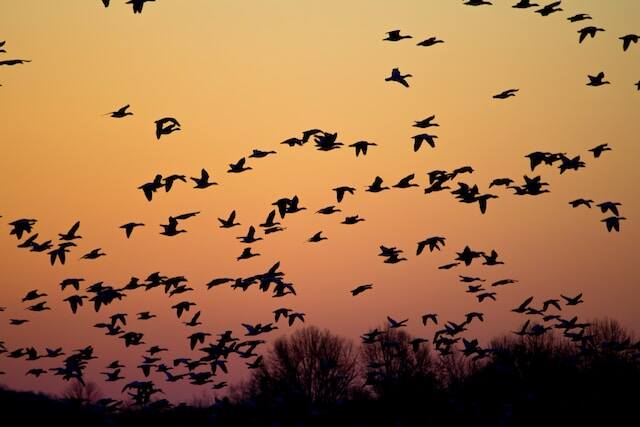
Where Do Birds Fly South For The Winter?
Overview of different regions where birds migrate to
Birds are known for their extraordinary ability to travel long distances every year.
During winter, many bird species embark on a great journey from their breeding grounds in the north to warmer destinations in the south.
Different bird species have different migration patterns and routes, but generally, they head to specific regions where they can find food and shelter.
North America
North America is home to a wide variety of bird species that migrate south for the winter months.
Many of these birds fly through Central America and South America, where they can find ideal habitats and food sources necessary for their survival.
For example, several species of hummingbirds- Anna’s hummingbird, Black-chinned Hummingbird, Rufous Hummingbird- spend their winters in Central America.
One of the most famous bird migrations across North America is made by Monarch butterflies.
A large percentage of Monarch butterflies that breed in Canada and the United States fly as far as 2000 miles south across North American prairies and deserts before reaching their wintering sites in Mexico’s Sierra Madre Mountains.
Europe and Asia
In Europe and Asia, bird migration is also an important phenomenon that occurs every year during winter times.
Some European birds like Swallows migrate all the way to Africa, while others like Tits move only short distances away from their breeding ground into nearby woodlands or hedgerows.
Many Asian migratory birds head down to Southeast Asia, where they can find suitable habitats with ample food sources such as insects or fruits.
The Siberian crane is one such migratory bird that travels over 5,000 miles from its breeding grounds in Siberia all the way down to India’s Keoladeo National Park.
Specific examples of bird species and their migratory patterns
One bird that is known for its impressive migration is the Arctic Tern. This seabird breeds in the Arctic during the summer months and travels as far as 12,000 miles to Antarctica for winter.
Another bird species with remarkable migratory patterns is the Bar-tailed Godwit, which breeds in Alaska and flies over 7,000 miles without stopping to New Zealand.
The Common Swift is another bird that migrates every year from Europe to Africa.
These birds travel up to 200 days a year and cover a distance of over 9,000 miles each way.
The Red Knot is a long-distance migrating shorebird that travels from its breeding grounds in northern Canada and Alaska all the way down to Tierra del Fuego at the southern tip of South America.
The Blackpoll Warbler is another impressive migrator which breeds in North America and flies eastward over the Atlantic Ocean before reaching South America, where it spends its winter.
Birds migrate south for winter based on factors such as food availability, climate changes, and breeding habits.
Different bird species prefer different destinations based on these factors. Knowing where different bird species migrate can be helpful in conserving their habitats along their migration paths.
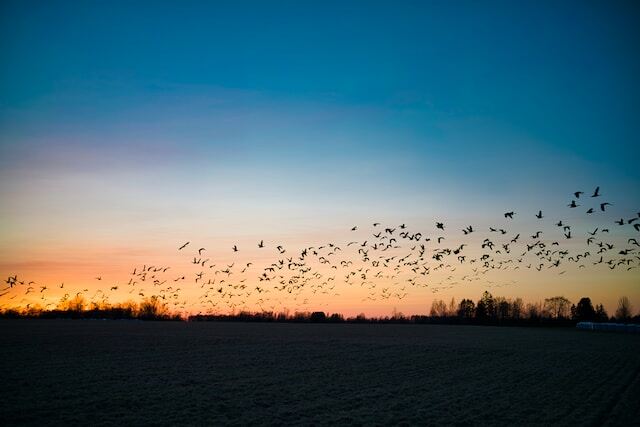
The Challenges Birds Face During Migration
The risks involved in long-distance flights for birds
Birds face tremendous dangers during their migration, especially during long-distance flights. They may encounter harsh weather conditions, such as storms or high winds, which can throw them off course.
Additionally, they may encounter predators like hawks or falcons, who are known to prey on small birds.
Fatigue is another significant risk, as some birds fly non-stop for days at a time without food or rest.
The research showed that the songs of these longer distance migrants become less complex over time, indicating a decline in cognitive abilities due to exhaustion and stress.
This finding suggests that the physical and emotional toll of migration is particularly high for these birds.
How human activities affect bird migration patterns
Human activities have a significant impact on bird migration patterns. For example, urbanization leads to habitat destruction and fragmentation, which can disrupt traditional migratory routes and cause population declines among some species.
Additionally, light pollution from cities can confuse migrants and cause them to become disoriented during their journey.
Birds naturally navigate using stars or the Earth’s magnetic field but artificial light sources throw off their internal compasses leading them astray. Agricultural practices also pose challenges for migrating birds.
Intensive farming practices like pesticide use reduce insect populations, which is a key food source for many migrating birds.
Loss of crop diversity has also led to habitat loss, which impacts breeding and stopover sites along migratory routes.
How climate change affects bird migration patterns
Climate change poses several challenges to migrating birds today; it causes shifts in temperature and precipitation patterns across regions, leading to changes in vegetation growth cycles which affect the timing of insect emergence upon which many birds feed.
As conditions change, birds must adjust their migration routes and timings to find suitable habitats and food sources.
Warmer temperatures can also cause some bird species to migrate earlier than usual, which can put them at risk of arriving too early before the breeding season begins or miss food sources such as insects that are not yet available.
Furthermore, since climate change affects weather patterns leading to more extreme weather events such as hurricanes or droughts, which can cause habitat destruction and loss of food resources for migrating birds.
Overall, it is important to understand the challenges that migratory birds face during their journey and how we can support their survival by protecting habitats along migratory routes, reducing human-caused disturbances like light pollution, and taking steps to address climate change.
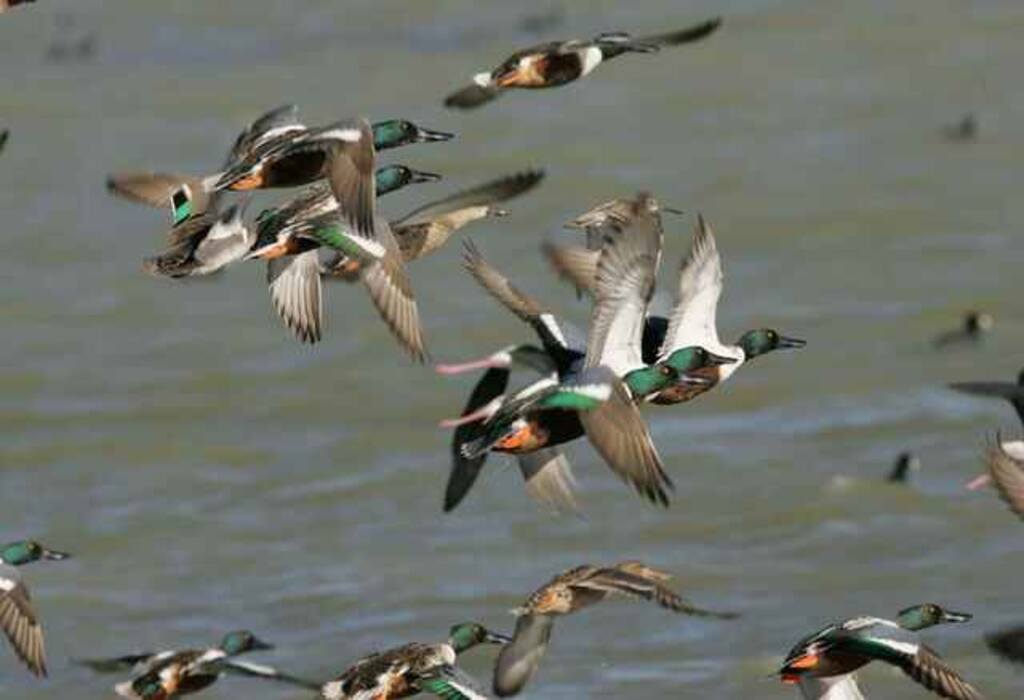
Ways to Support Migrating Birds During Their Journey
Tips on how to create a bird-friendly environment
Creating a bird-friendly environment in your backyard or garden can be a great way to support migrating birds during their journey.
You can start by planting native plants and flowers that provide food and shelter for birds. Avoid using pesticides as they can harm not only the targeted pests but also innocent birds.
In addition, you can provide nesting boxes, bird baths, and feeders for birds.
These simple additions can help attract various species of birds while providing them with the necessary resources they need during their long journey.
How to support local conservation efforts that protect migrating birds
You can also support local conservation efforts that aim to protect migrating birds during their journey.
One way is by joining organizations such as the National Audubon Society or the Cornell Lab of Ornithology, which work on protecting habitats and advocating for bird conservation policies.
Additionally, you can volunteer your time and resources by participating in local educational programs or contributing financially to conservation efforts.
The Risks Involved in Long-Distance Flights for Birds
It is important to note that bird migration is not an easy feat; it comes with many risks such as collisions with tall buildings, wind turbines, power lines, communication towers fences among others.
Therefore, if one has an opportunity in their area, one should advocate these structures visibility so that it reduces its risks towards these migratory animals
How Human Activities Affect Bird Migration Patterns
Human activities such as deforestation, habitat fragmentation are some of the contributors to migration patterns’ disruption globally affecting the timing of migration.
Conclusion: Help Protect Migrating Birds
Migratory birds play important roles in ecosystems worldwide; without them around, we’ll miss out on vital ecological services.
Supporting their journeys can entail many different forms of action, from creating bird-friendly environments to advocating for conservation policies.
Through these small actions, we can contribute to the protection of these magnificent creatures and ensure their survival for generations to come.
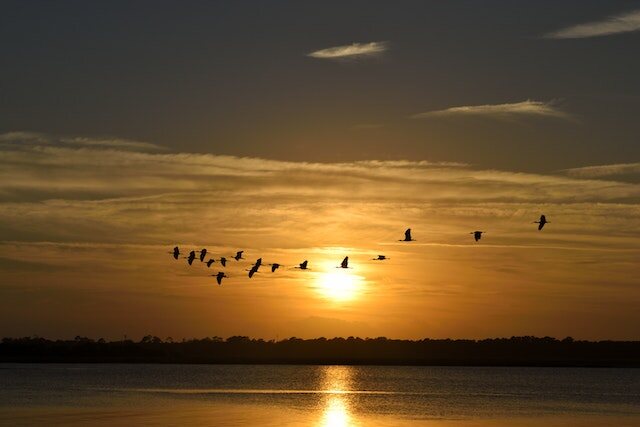
FAQs: Where Do Birds Fly South For The Winter?
Do all birds fly south for the winter?
Answer: No, not all birds fly south for the winter. While many bird species migrate to warmer regions, some birds stay in their habitats year-round, adapting to the colder conditions.
How do birds know when to migrate?
Answer: Birds have an innate sense of timing based on changes in daylight, weather patterns, and food availability. These cues signal them to begin their migratory journey.
Why do birds migrate south?
Answer: Birds migrate south to escape harsh winter conditions and find better food sources. The availability of insects, seeds, and fruits in warmer regions during winter provides essential nourishment for their survival.
Where do birds fly south to?
Answer: Birds fly to various destinations depending on their species. Some migrate to Central and South America, while others travel to Africa, Southeast Asia, or even within their own continent to more temperate regions.
How far do birds travel during migration?
Answer: The distance birds travel during migration varies greatly. Some birds may travel a few hundred miles, while others undertake journeys spanning thousands of miles, crossing continents and even oceans.
Can birds fly across the ocean?
Answer: Yes, some bird species are capable of flying across the ocean during migration. They use favorable wind conditions and rely on their endurance to complete these extraordinary feats of long-distance flight.
How long does bird migration last?
Answer: The duration of bird migration can vary. Some birds complete their migration within a few weeks, while others may take months to reach their wintering grounds and then return to their breeding areas in spring.
Do birds return to the same wintering grounds every year?
Answer: Many bird species display remarkable site fidelity, meaning they return to the same wintering grounds year after year. However, some birds may adjust their migration routes or destinations based on environmental changes or availability of resources.
How do birds find their way back to their breeding grounds?
Answer: Birds navigate using a combination of celestial cues, landmarks, and their innate sense of direction. They rely on the earth’s magnetic field, the position of the sun and stars, and their memory of familiar landmarks to find their way back to their breeding grounds.
What happens if birds cannot migrate?
Answer: Birds that are unable to migrate due to injuries or other factors face a challenging time finding enough food and surviving the harsh winter conditions. They rely on local food sources and shelter to endure until the migration season passes.

